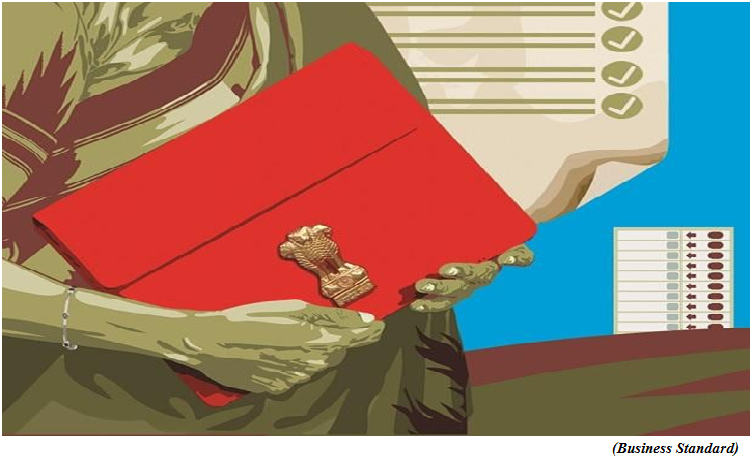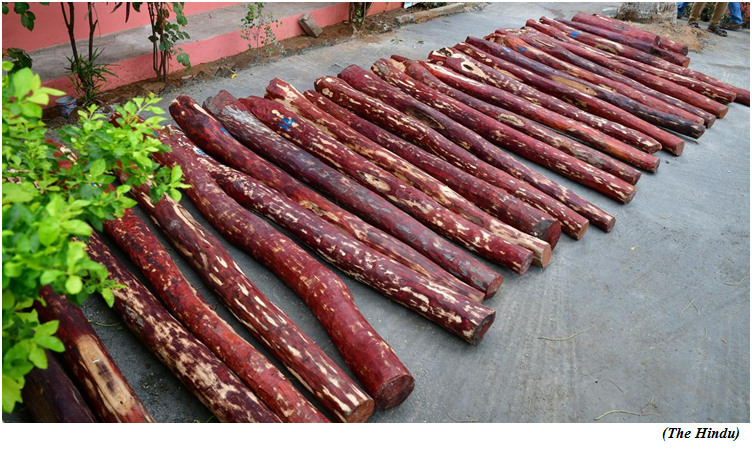What are Unity Malls, and what did FM Sitharaman say about them in Budget (GS Paper 3, Economy)

Why in news?
- In her Budget speech, Finance Minister proposed to set up ‘Unity Malls’ in every state.
- She said all states would be encouraged to construct a Unity Mall in their capitals, most popular tourism centres, or prominent economic centres.
What are Unity Malls?
- These Unity Malls malls would focus on promoting and selling the state's ODOPs, GI products and other handicraft products.
- They will also provide space and promote similar products from other states.
- There is nonetheless speculation that these malls would be modelled on the lines of the Ekta Mall located near the Statue of Unity in Kevadia in Gujarat.
- This mall sells handicraft items from various states to visitors from across India.
- It is spread over a vast area and has two floors and 20 emporiums showcasing traditional textiles and artisan handicrafts.
What's the idea behind setting up these malls?
- The idea gives a boost to local products, which have remained confined to an area in the absence of a platform to canvass their beauty.
- These malls will likely give a fillip to local economies and help artisans thrive. Also, they can be a great tourist attraction to show the local culture.
What is ODOP?
- ODOP stands for One District, One Product. The government launched this initiative to make regional products popular and more accessible, thereby increasing the earnings of the native artisans for their labour.
- Under this scheme, every state has to identify the main product of that district and offer support for its production, storage and marketing.
- The products can be anything from agri-produce and cereal-based products to food products. It can also be fisheries or those made from waste.
- For example, the ODOP from Ayodhya is jaggery; from Darjeeling, it is tea; from Guntur in Andhra Pradesh, it is spiced (chilli and turmeric); for Chandigarh, it is bakery-based products.
What is a GI tag?
- A geographical indication or GI tag is awarded to products that originate within a specific geographical region and possess some unique characteristics and qualities because of their area of origin.
- This tag assures the buyer that the product originated from a specific area. The total number of registered GI products in India is approaching 450.
Budget 2023-24: Deep Ocean Mission gets Rs 600 crore
(GS Paper 3, Science and Tech)
Why in news?
- The Centre’s Deep Ocean Mission, which aims to explore marine biodiversity for the sustainable use of resources, has been allocated Rs 600 crore in the Union Budget 2023-2024.
- Oceans are storehouses of food, energy, minerals and medicines, according to the Ministry of Earth Sciences (MoES), which oversees the mission. It also modulates weather and climate.

Key Highlights:
- The MoES aims to allot money to a myriad of activities such as a manned submersible, ship-building, exploration and conservation of deep-sea biodiversity and identification of mineral deposits in the deep ocean.
- A manned submersible will be developed to carry three people to a depth of 6,000 metres in the ocean.
- The goal is to facilitate mineral exploration in the central Indian Ocean.
- Deep-sea mining involves extracting ores rich in cobalt, manganese, zinc and other rare metals from the sea floor. They contain critical minerals needed to build batteries for electric vehicles and renewable energy capacity, smartphones and laptops.
Deep Ocean Mission:
- In 2016, India was awarded a 15-year contract to explore an area of 75,000 square kilometres for mining polymetallic nodules from the Central Indian Ocean Basin at depths of 5,000-6,000 metres.
- The exploration studies of minerals will pave the way for commercial exploitation in the future.
- Under the deep ocean mission, Indian researchers are developing a technology for mining operations.
- The other components of the mission include developing ocean climate change advisory services and designing offshore Ocean Thermal Energy Conversion (OTEC) powered desalination plants.
CITES database reveals red sanders smuggling
(GS Paper 3, Environment)
Why in news?
- The CITES trade database has recorded 28 incidents of red sanders confiscation, seizure and specimens from the wild being exported from India, a fact sheet prepared by TRAFFIC, a global wildlife trade monitoring organisation has revealed.
- These consignments were exported to China (53.5%), Hong Kong (25.0%), Singapore (17.8%) and the United States of America (3.5%) from 2016 to 2020.

About CITES:
- CITES (Convention on International Trade in Endangered Species of Wild Fauna and Flora) is an international agreement between governments, whose aim is to ensure that international trade in wild animals and plants does not threaten the survival of the species.
Red Sanders:
- Red Sanders (Pterocarpus santalinus), or red sandalwood, is an endemic tree species with distribution restricted to the Eastern Ghats of India.
- The species found in Andhra Pradesh and growing up to a height of 10 to 15 metres is reported to be one of India’s most exploited tree species, and is under severe pressure from illegal logging and harvesting.
- Under the foreign trade policy of India, the import of Red Sanders is prohibited, while export is restricted.
Usage:
- Red sanders is under severe pressure from illegal logging and harvesting.
- Its heartwood is in demand in both domestic and international markets and is used to make furniture and handicrafts, while the red dye obtained from the wood is used as a colouring agent in textiles and medicines.
Discrepancy:
- India reported an export of more than 19,049 tonnes of logs. In comparison, the importing countries reported about 4,610 tonnes of logs, 127 tonnes of sawn wood, 20 tonnes of transformed wood and 980 kg of wood products, clearly indicating a discrepancy in reporting of red sanders trade.
- China remains the largest importer with more than 13,618 tonnes of the products, followed by Hong Kong (5,215 tonnes) and Singapore (216 tonnes).
Status:
- Listed under Schedule IV of the Wildlife Protection Act and categorised as endangered as per the IUCN Red List.
- Red sanders is a very slow-growing tree species that attains maturity in natural forests after 25-40 years.




